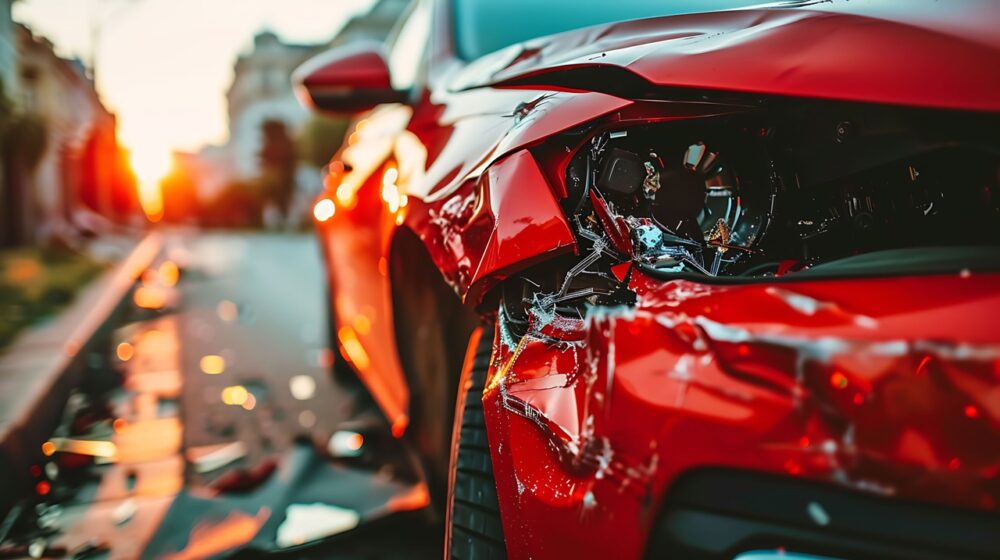For most people, summer is a season of joy, fun, and relaxation; it’s the perfect time to press pause and take a break from your busy life, whether that means spending lazy days laying in the sun, at the beach, or by the pool, spending more time with friends and family, or going on a holiday and exploring new and exciting destinations. However, beyond these idyllic images that spring to mind as soon as the temperatures start rising, summer can also spell trouble and turn into the season of discontent for road users, as traffic accidents seem to surge during this time of the year.
One would be inclined to believe that winter is the worst season to hit the road, given the extreme weather events like heavy snow, ice accumulation, blizzards, and freezing temperatures, and the poor road conditions that make it harder for drivers to control their vehicles, but statistics seem to prove different. While, unfortunately, car accidents are a common occurrence and happen all year round on roads all over the world, the likelihood of being involved in a traffic collision is considerably higher during the months of June, July, and August.

But what causes vehicle accident rates to spike throughout these months? The uptick can be attributed to a variety of factors, from more people being on the road to more roadwork taking place, longer journeys, and distracted driving. So, let’s break down each of these causes to gain a better understanding of the phenomenon.
Increased traffic
Traffic is usually busier during summer, especially on the weekends, as the roads get crowded with holidaymakers travelling to and from their destinations or going on road trips and tourist drivers who are unfamiliar with local roads, ramping up the numbers of daily commuters, leading to more frequent traffic jams and increasing the likelihood of car accidents.
Besides, the number of inexperienced drivers also tends to increase with schools being out and teenagers who just got their driver’s licenses eager to put their skills to the test in the real world. Add to that the fact that summer is typically considered the best season for taking a driving test, and the warm temperatures also seem to bring a more diverse crowd of traffic participants out on the road, from pedestrians to cyclists and motorcyclists, which are more vulnerable, and you can clearly see how this can turn into a dangerous combination.
Reckless driving behaviour
Summer is also synonymous with parties, holidays, sleepless nights and carefree adventures. But what does that have to do with scary traffic statistics? Well, all these activities and pastimes that make summer such a magical season can also indirectly contribute to reckless driving behaviour.
For starters, with more people partying and consuming alcohol, there is a high chance many of the revellers will get behind the wheel intoxicated. While driving under the influence (DUI) is one of the most serious traffic offences and attracts severe penalties due to the risks it involves, this doesn’t seem to curb the phenomenon.
The roads are also filled with impatient drivers who rush to the airport on their way to their next travel destination. This can make them drive more aggressively and go above the speed limit, both of which can increase the risk of accidents. Drivers are also more likely to get distracted by the scenery and vacation vibes and throw caution to the wind.
Vehicle malfunctions
The steaming summer temperatures can take a toll not only on people’s health and ability to concentrate on their normal activities but also on vehicle performance. Therefore, the warmer months also see a rise in mechanical issues.
Low coolant levels, engine overheating, weak battery, tyre blowouts, damaged belts, or failing AC are some of the most common issues car owners deal with due to scorching summer weather. Proper maintenance and care can go a long way in helping drivers prevent these problems or catch them early so they can avoid further issues down the line.
More roadwork underway
Road repairs and construction projects predominantly happen during the summer. While roadwork is essential to infrastructure development and maintaining safe and efficient transport systems, it can’t be denied that work zones on the road pose a serious hazard for drivers, especially if they are not clearly marked or don’t have adequate protections in place.
Apart from increasing commute time and making it harder for people to reach their destination, road construction can also lead to more car crashes as drivers may become confused or follow the cars ahead too closely if they are in an unfamiliar setting.
Longer journeys
Summer is a great season for going on long road trips with family or friends, giving people the possibility to create flexible itineraries and experience their destination in a more authentic way. But as fun as road trips may be, they’re also challenging for the person standing behind the wheel.
When people drive for long periods, fatigue and exhaustion eventually set in, dulling their senses and slowing their response time. This impacts their capacity to control the vehicle, making them more prone to traffic incidents. That’s why regular breaks and proper rest are a must when going on long journeys.
Unfavourable weather conditions
With the sun up in the sky, one might think that summer weather has nothing to do with the spike in accident rates. However, weather phenomena do play a role in it, given that extreme events such as hailstorms, heavy showers, or strong winds seem to become increasingly common and cause problems for road users.
Being aware of the driving risks and hazards during summer can help drivers become more cautious and take extra safety measures to ensure they and everyone around them reach their destination safely.
















